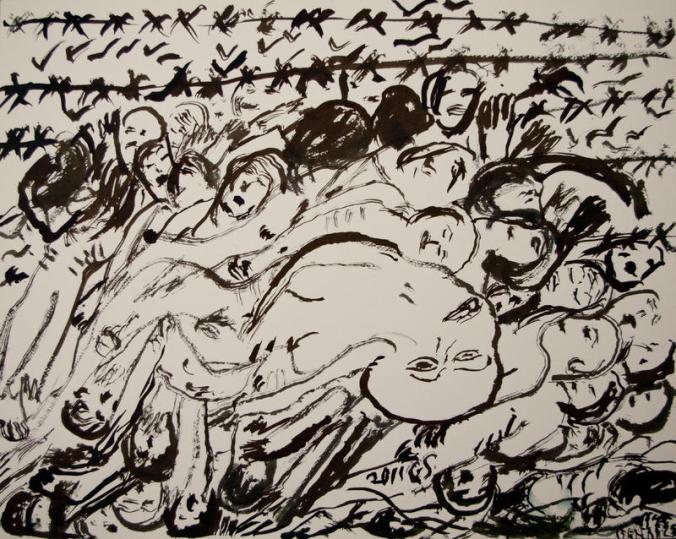Ioanida Costache lectures about cultivation and transmission of Romani memories of the Holocaust through music

Ioanida Costache, the Center’s 2019-2020 Breslauer, Rutman, and Anderson Research Fellow, gave a public lecture about the monthlong research she conducted in the USC Shoah Foundation Visual History Archive during her residency at the USC Shoah Foundation Center for Advanced Genocide Research. This research is part of her ongoing dissertation project that examines how music helps facilitate the cultivation and transmission of Romani memories of the Holocaust.
In the first part of her lecture, Costache positioned her work around the concept of critical listening to the testimonies of Roma survivors of the Holocaust as a way of countering the marginalization and silencing of this history. She described that not much is known about the Romani experience of the Holocaust and pointed to the existing “culture of silence” that surrounds the Romani Holocaust and through which the lack of knowledge about this event is interpreted. Costache noted that, instead of putting the responsibility to speak out on the survivors, the responsibility should lie with the majority society and those in power should be the ones to cultivate the “culture of listening.” She noted that this does not mean that the majority society should speak on behalf of the Romani community, but that it should recognize that the history of the Romani Holocaust belongs to everyone. According to Costache, the Romani survivors have done their part by telling their stories through testimonies like the ones housed in the USC Shoah Foundation Visual History Archive, and it us our responsibility to listen, and listen critically.
Costache then turned to illustrating her notion of “critical listening.” To do so, she presented four case studies from the Visual History Archive. According to Costache, each case study presents and demands a different form of listening. The first case study focused on an excerpt from the testimony of a Jewish survivor - Dina Gottliebova-Babbitt - who recalls her memory of a Roma woman named Celine whom she painted in Auschwitz on Josef Mengele’s request. This example, Costache said, highlights the “listening through friendship.” The second example was an account about anti-Roma prejudice in Germany, based on the testimony of a Sinti Roma survivor, Lina Jackson. In critically listening to Lina Jackson, Costache claimed, we become aware of the injuring nature of stereotypes about the Roma. The next example was drawn from the testimony of Emilie Machalkova, a Czech Roma survivor, who performs a Czech Romani folk song. The song's familiar melody was used, with new lyrics, for songs detailing the Romani experience of the Holocaust. The final case study showed another example of a musical performance. This one took place during the testimony of Agnieszka Siwak, in which the performance of a traditional Romani song, performed by her family, elicits deep emotion from the survivor. According to Costache, the very performance of Romani music after the Holocaust is a proclamation against the genocidal ideology of erasure.
In the final part of her lecture, Costache discussed the theoretical implications of critical listening as an antidote to silencing. Drawing from the literary scholar Cathy Caruth, Costache argued that the “oral” encodes the suffering that is otherwise not part of dominant historical narratives. Musical testimonies, Costache noted, provide a possibility for decoding the layers of meaning and resistance woven into these songs. She contended that critical listening of the testimonies of Holocaust survivors is important for realizing the power of testimonies to transmit knowledge about otherwise silenced or marginalized histories. She concluded her lecture with an open call to stop passively hearing and start actively listening to the survivors since, as she said, no one hears the Roma yet.
Costache’s lecture was followed by a lively discussion that included questions about the access to Romani music in concentration camps during the Holocaust; the silencing and experiences of Roma survivors in other countries, the role of music in giving voice to the subaltern; the practice of setting lyrics about the Romani Holocaust to existing folk melodies; music as a form of resistance; her own suggestions on how to be better listeners; and a number of questions about her experience of working with the Visual History Archive as a source.
Summary by Badema Pitic
Like this article? Get our e-newsletter.
Be the first to learn about new articles and personal stories like the one you've just read.
